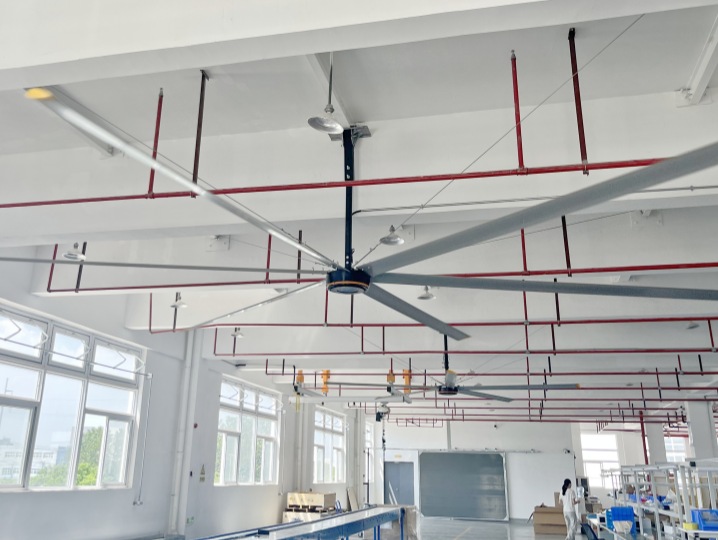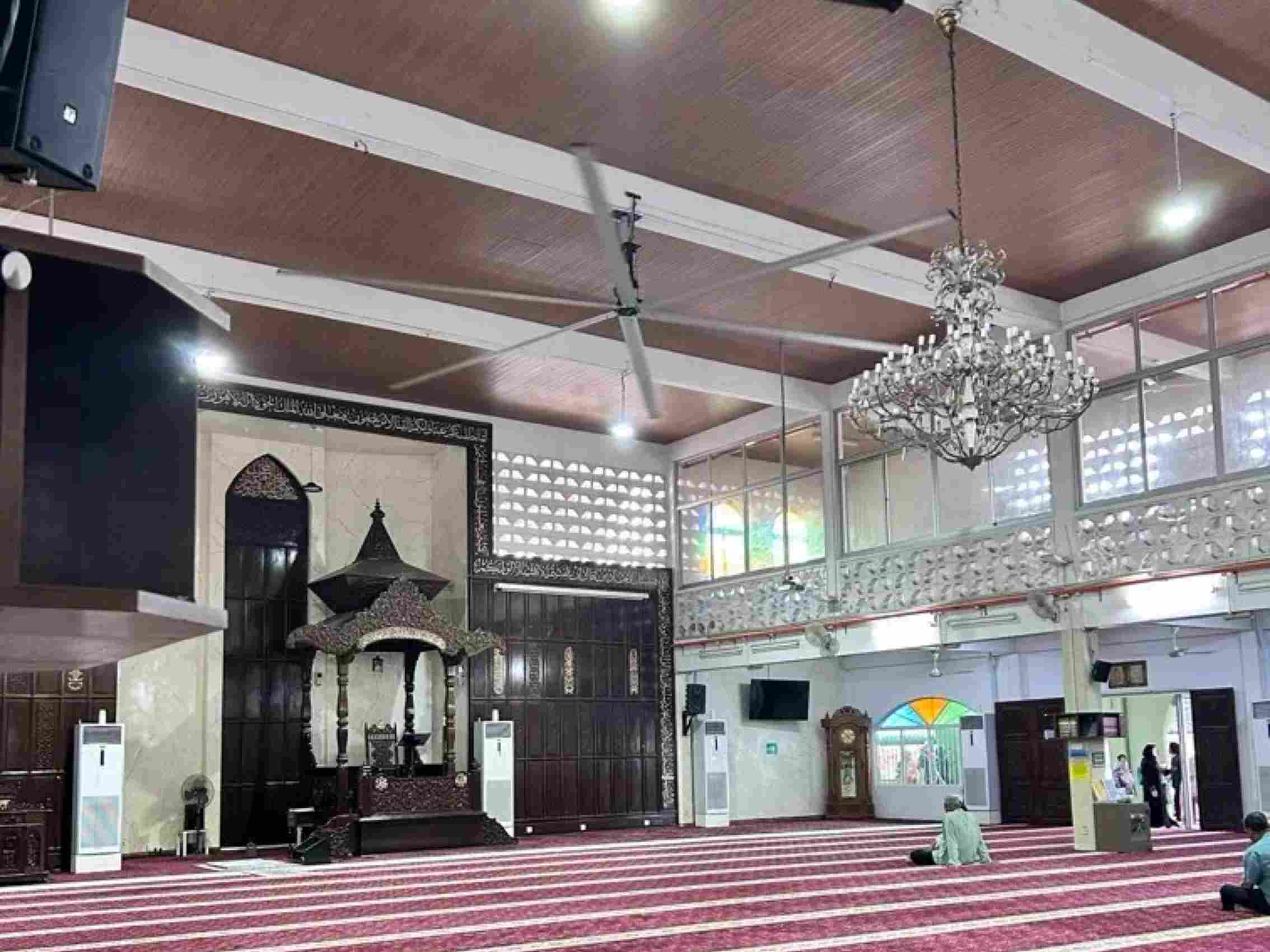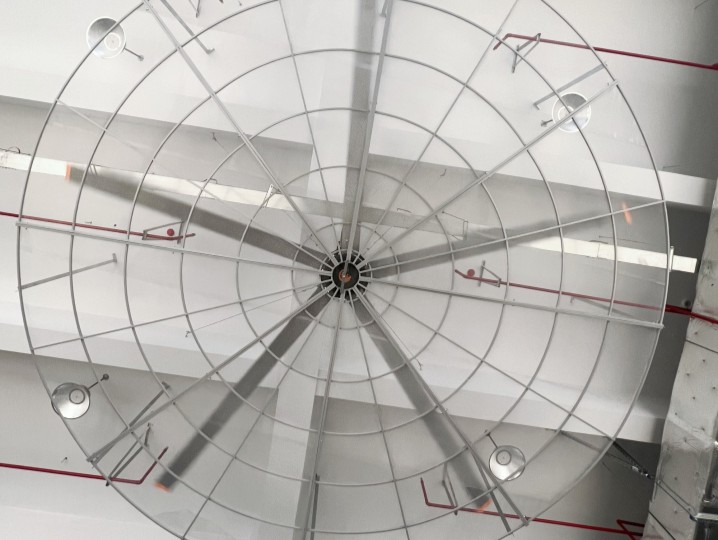HVLS Ceiling Fan Price
In industrial environments, fans are common ventilation equipment widely used in workshops, warehouses, and factories. This article will analyze the factors affecting the price of industrial large ceiling fans to help you better understand market pricing.
1. Price Range of Industrial Large Ceiling Fans
The price of industrial large ceiling fans is influenced by various factors, generally ranging from a few thousand to tens of thousands of MYR. Specific pricing depends on the following key factors:
Size and Airflow: The size and airflow capacity of an industrial large ceiling fan directly determine its price. Fan diameters usually range from 3 meters to 7 meters. Larger fans with higher airflow capabilities tend to be more expensive. Large ceiling fans are ideal for ventilating expansive spaces, while smaller fans suit compact workshops or warehouses.
Number of Blades: Ceiling fan blades typically range from 3 to 8 blades. Most industrial fans have 5 or 6 blades, but the number of blades is not necessarily better if more. Blade selection should consider the actual area and height of the site.
Material and Design: High-quality materials such as steel and aluminum alloy increase costs, while special designs (e.g., explosion-proof or corrosion-resistant) also elevate prices.
Drive System and Technical Features: Industrial large ceiling fans equipped with intelligent control systems, adjustable speed features, or other advanced functionalities are priced higher than basic models.
2. Key Factors Affecting the Price of Industrial Large Ceiling Fans
Application and Suitable Scenarios:
The price of industrial large ceiling fans is closely related to their intended use. Fans for standard workshops differ in price compared to those designed for high-temperature, high-humidity, or chemically corrosive environments (e.g., chemical plants, food processing facilities). Fans designed for specific scenarios often require higher technical standards and more complex manufacturing processes, resulting in higher prices.
Technical Performance:
The efficiency and operational performance of a fan are critical purchasing considerations. For instance, fans incorporating frequency control technology, brushless motors, or other advanced technologies are generally more expensive than traditional models. These innovations improve energy efficiency, reduce noise, and extend service life.
Energy Consumption and Efficiency:
Industrial large ceiling fans consume electricity during operation. Fans with better energy-saving features may cost more. Energy-efficient fans can deliver robust ventilation with lower power consumption, saving on electricity bills and reducing operational costs for businesses.
Installation and Maintenance Costs:
Beyond the initial purchase price, installation and maintenance significantly impact total costs. Installing large ceiling fans requires professional teams, and some brands offer regular maintenance services, adding extra costs. Additionally, warranty periods and after-sales service quality directly affect long-term usage expenses.
3. Major Brands and Price Comparisons
The market offers numerous brands with various specifications and prices for industrial large ceiling fans. Below are common brand categories:
Value-for-Money Brands:
Brands like Suria and DHOO offer affordable options suitable for general workshop use. Medium to small-sized industrial ceiling fans typically range from MYR 3,000 to MYR 9,000, depending on size and technical configurations.
International Brands:
International brands such as Big Ass Fans (USA) and Mitsubishi Electric (Japan) are more expensive, generally priced between MYR 12,000 and MYR 30,000 or higher. These brands often feature advanced technology, superior performance stability, and longer service lifespans, making them suitable for large facilities or specialized environments.
4. How to Choose the Right Industrial Large Ceiling Fan
Determine Requirements:
Select fan size and airflow capacity based on actual needs. Small workshops or warehouses may require 3-4 meter fans, while 7-meter or larger fans are better for expansive factory spaces.
Budget Considerations:
Choose cost-effective products within your budget and usage needs. If your budget allows, opt for premium brands and high-performance fans to ensure stability and durability.
After-Sales Service:
Select brands offering reliable after-sales service to minimize maintenance costs.
5. Conclusion
When purchasing industrial large ceiling fans, price should not be the sole consideration. A suitable fan improves workplace comfort and productivity. Decisions should account for factors such as fan size, technical performance, brand reputation, and the operating environment. By understanding pricing components and influencing factors, you can make an informed purchasing decision to maximize value and meet your business's long-term needs.
 New Year Holiday Notice
New Year Holiday Notice
 Large Ceiling Fans: The Soluti
Large Ceiling Fans: The Soluti
 Enhancing Public Comfort with
Enhancing Public Comfort with
 Fall Prevention Measures for L
Fall Prevention Measures for L
